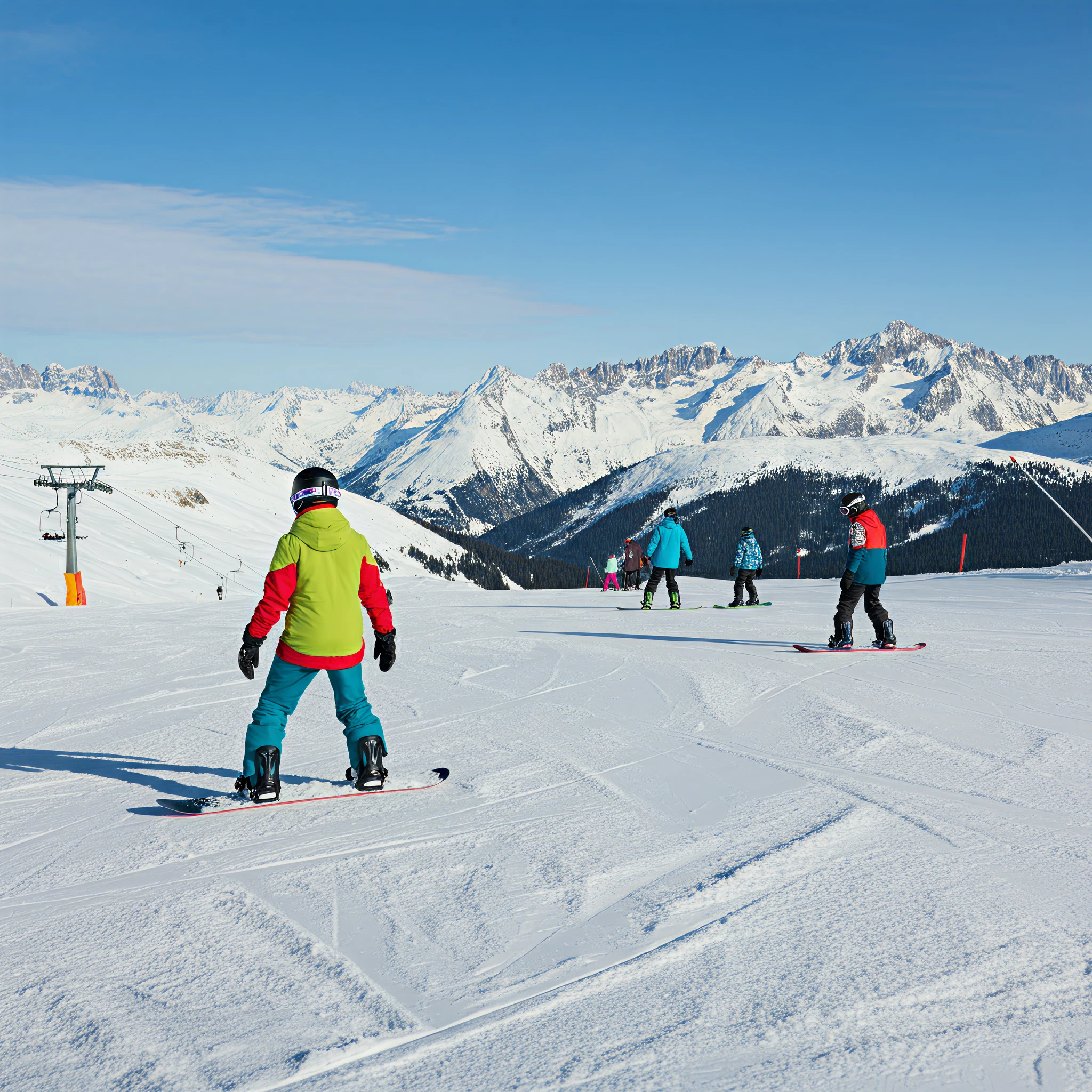Debating whether to hit the slopes with skis or a snowboard? Many winter sports enthusiasts grapple with the question, «Is snowboarding easier than skiing?» The answer isn’t so straightforward, as it really depends on what you’re looking for and how you plan to learn. To help you decide, we’ve outlined the major differences and challenges beginners face with both sports.
The Basics: What’s the Learning Curve?
There’s an often-repeated phrase in snow sports communities:
- «Skiing is easier to learn but harder to master, while snowboarding is harder to learn but easier to master.»
Why is this the case?
Learning to Ski
For beginners, skiing generally feels more intuitive. Your legs remain independent of each other, which helps with balance and movement. Since you’re also facing forward, it’s easier to see where you’re going and maintain control.
Most first-time skiers can feel comfortable on beginner slopes after one or two lessons. However, progressing beyond the basics takes significantly more time. Learning advanced techniques like carving, efficient turning, and managing higher speeds is a lengthy process that requires advanced levels of precision and control.
Learning to Snowboard
The first few days on a snowboard can be challenging. Unlike skiing, your feet are strapped to the same board, essentially locking them in place. This means you’ll need to rely on shifting your weight to steer while learning to balance without the ability to separate your legs for stability.
New snowboarders often spend more time on the ground than skiers do. However, once you grasp the basic techniques of balancing, braking, and executing toe and heel turns, progress happens much more quickly than with skiing. Within a week or two, many snowboarders feel confident carving down beginner and intermediate slopes.
Verdict?
If you’re seeking quicker initial success, skiing might be easier to get the hang of. On the other hand, if you’re willing to tough it out in the beginning, snowboarding could allow you to master advanced techniques much faster.
Safety Considerations
No matter which sport you choose, both skiing and snowboarding come with a level of risk. Understanding the potential for injury and how to mitigate it is essential for beginners.
- Snowboarding Risks: You’re more likely to fall while snowboarding, especially during the learning phase. This often leads to wrist and tailbone injuries, so wearing wrist guards and padded shorts is highly recommended.
- Skiing Risks: Skiers experience fewer falls but are at a slightly higher risk for serious injuries, particularly to the knees and from high-speed collisions.
Regardless of your choice, always wear a helmet and take a lesson or two from a certified instructor to ensure you’re practicing safely from day one.
Off-Piste Performance
For many, the ultimate thrill of winter sports comes from venturing off the groomed slopes and into fresh powder or more rugged terrain. How do these sports fare in off-piste conditions?
- Snowboarding: Transitioning to off-piste snowboarding is relatively seamless. The skills you develop on groomed slopes directly apply to powder riding, so you can explore untracked snow almost immediately.
- Skiing: Off-piste skiing feels significantly different from on-piste skiing. It requires relearning balance and turning techniques to adapt to the softer, less predictable snow textures.
Snowboarders may find the learning curve for powder conditions simpler, but backcountry skiers often gain access to remote areas using climbing skins on their skis, opening up a broader range of experiences.
Physical Requirements
Both snowboarding and skiing are physically demanding, so some physical preparation will be helpful before you try either sport.
- Snowboarding: This sport puts heavy emphasis on your core and lower back for balance and control. If you have a strong core, you’ll have an advantage on a snowboard. Doing exercises like planks or Pilates can help you strengthen these muscle groups in advance.
- Skiing: Skiing relies far more on leg strength, especially in the quads and glutes. Incorporating cycling or squats into your exercise routine before hitting the slopes can make skiing feel more manageable.
No matter the sport, be prepared for some soreness after your first day on the mountain!
The Fun Factor
Ultimately, both skiing and snowboarding are incredibly rewarding experiences that offer unique thrills on the mountain.
- Skiing: If you’re looking for a sport that feels natural from the start and gives you a sense of control and precision, skiing might be your best bet.
- Snowboarding: For those who crave a more laid-back, freestyle vibe and don’t mind some early challenges, snowboarding brings an unmatched sense of flow and creativity.
Is Snowboarding Easier Than Skiing? Final Thoughts for Beginners
The answer depends on what you want to get out of your winter sports experience. If you value rapid initial progress and precision, skiing might be easier for you to pick up. If you’re more about the long-term payoff and are willing to dedicate some patience to the learning process, snowboarding could be a better fit.
Whichever sport you choose, don’t forget the most important part of learning a new activity on the mountain – having fun! Taking lessons, picking the right gear, and sharing moments with friends or family make all the difference.
Are you ready to gear up and find your ideal snow sport? If so, grab that snowboard or those skis, and hit the slopes this season!








